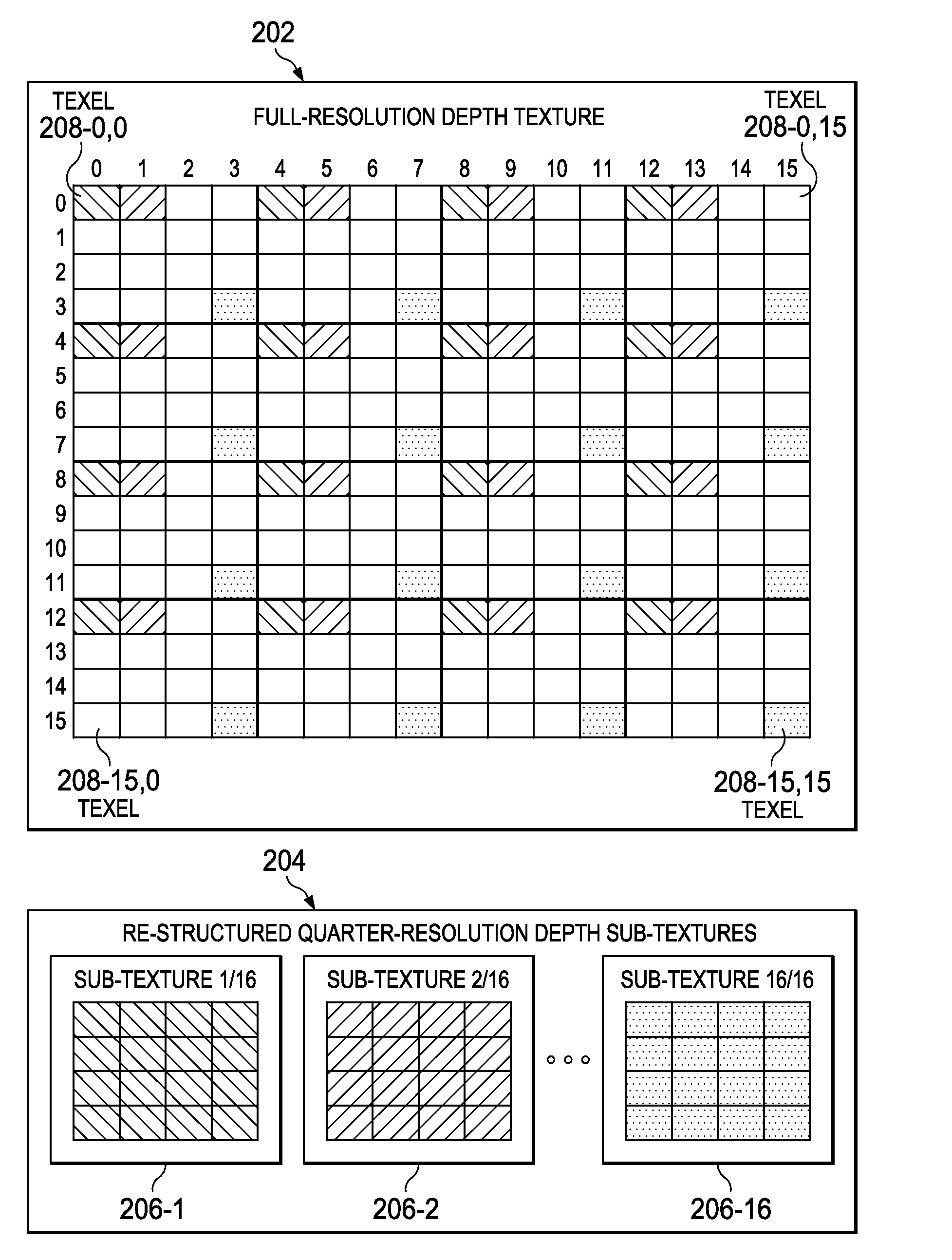Depth texture data structure for rendering ambient occlusion and method of employment thereof
- Summary
- Abstract
- Description
- Claims
- Application Information
AI Technical Summary
Benefits of technology
Problems solved by technology
Method used
Image
Examples
Embodiment Construction
[0016]Before describing various embodiments of the data structure or method introduced herein, AO will be generally described.
[0017]A well-known class of AO algorithm is screen-space AO, or SSAO. SSAO algorithms derive AO from the position of the nearby potentially occluding surface with respect to the position of the occluded point and a surface normal vector at the point. The surface normal vector is employed to orient a hemisphere within which surfaces are considered potential occluding surfaces, or simply “occluders.” Surfaces in the scene are constructed in screen-space from a depth buffer. The depth buffer contains a per-pixel representation of a Z-axis depth of each pixel rendered, the Z-axis being normal to the display plane or image plane (also the XY-plane). The depth data forms a depth texture for the scene. A texel represents the texture value at a single pixel.
[0018]One variety of SSAO is horizon-based AO, or HBAO. HBAO involves computing a horizon line from the shaded ...
PUM
 Login to View More
Login to View More Abstract
Description
Claims
Application Information
 Login to View More
Login to View More - R&D
- Intellectual Property
- Life Sciences
- Materials
- Tech Scout
- Unparalleled Data Quality
- Higher Quality Content
- 60% Fewer Hallucinations
Browse by: Latest US Patents, China's latest patents, Technical Efficacy Thesaurus, Application Domain, Technology Topic, Popular Technical Reports.
© 2025 PatSnap. All rights reserved.Legal|Privacy policy|Modern Slavery Act Transparency Statement|Sitemap|About US| Contact US: help@patsnap.com



